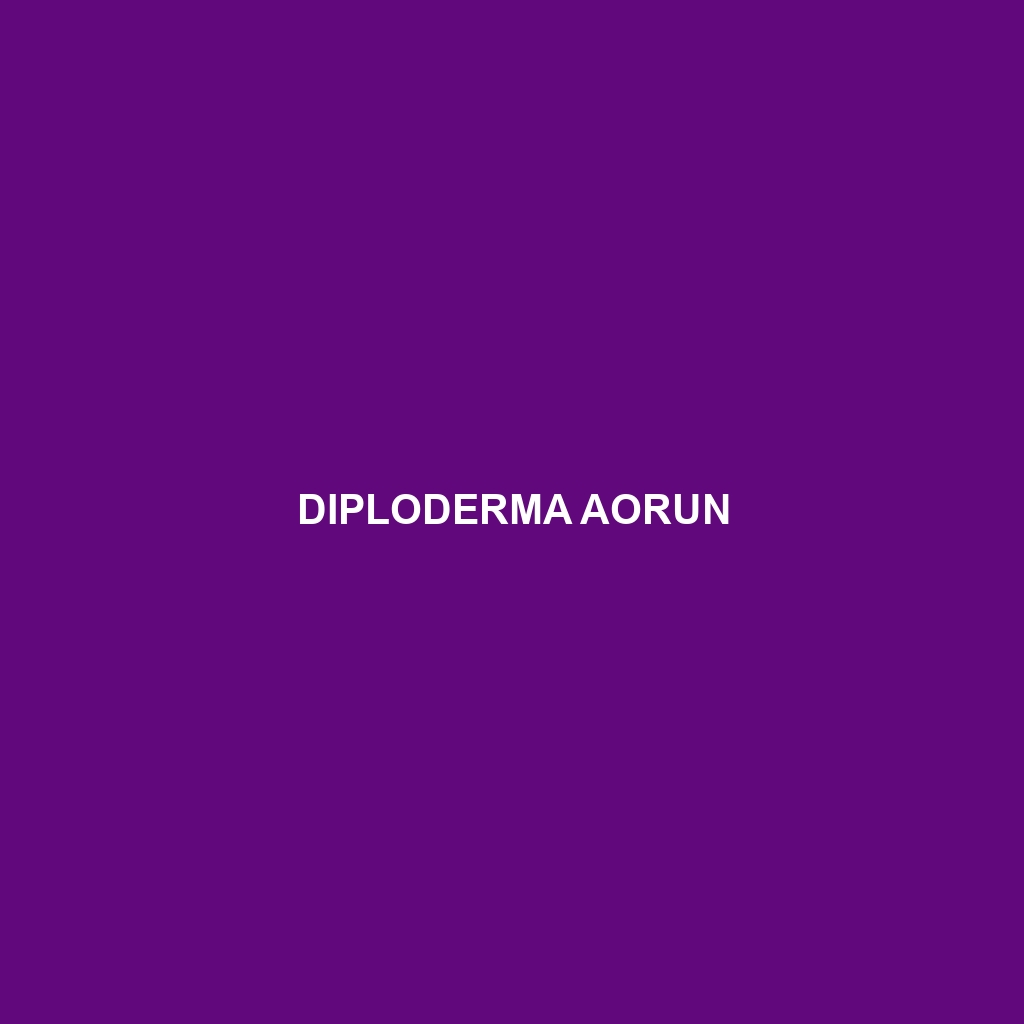Species Description: Diploderma aorun
Common Name: Diploderma aorun
Scientific Name: Diploderma aorun
Habitat
Diploderma aorun is primarily found in the lush mountainous regions of southeastern Asia, particularly in areas dominated by subtropical and tropical forests. This species thrives at elevations ranging from 500 to 2,000 meters, often residing in dense vegetation and on rocky cliffs. The specific geographic locations include provinces in China, including Yunnan and neighboring regions where the climate and habitat provide the necessary thermal and humidity conditions for survival.
Physical Characteristics
Diploderma aorun is a medium-sized lizard, reaching lengths of about 20 to 30 cm. The coloration varies, typically showcasing a combination of earthy tones such as browns, greens, and occasional patterns that allow them to blend seamlessly into their forest surroundings. Their distinctive features include a flattened body, elongated limbs, and a prominent ridge along the spine, which contributes to their camouflage against tree bark and leaves. Their large, expressive eyes are another striking characteristic that enhances their appealing appearance.
Behavior
This species is primarily diurnal, meaning it is active during the day. Diploderma aorun exhibits territorial behavior, especially during the mating season, where males display to establish dominance. Unusual for many lizards, these creatures are known to be arboreal, spending a significant amount of time climbing trees and basking in the sunlight. They are also capable of rapid movements to evade predators, showcasing their agility and adaptability in their natural habitat.
Diet
Diploderma aorun is an insectivorous species, primarily feeding on a variety of insects such as crickets, beetles, and caterpillars. Their diet may also include small invertebrates and, on occasions, plant matter, showcasing their opportunistic feeding habits. This dietary flexibility plays a crucial role in their survival in the diverse environments they inhabit.
Reproduction
The breeding season for Diploderma aorun typically occurs in late spring to early summer. Females lay 2 to 6 eggs in hidden locations, such as under decaying logs or within rocky crevices, providing protection against predators. The incubation period lasts about 60 days, after which hatchlings emerge, fully capable of independent survival. Parental care is minimal, marking them as a species with a unique reproductive strategy.
Conservation Status
Currently, Diploderma aorun is classified as vulnerable due to habitat loss and degradation, primarily driven by deforestation and urbanization. Conservation efforts are essential to protect the remaining populations of this species, ensuring that their natural habitats are preserved for future generations.
Interesting Facts
One fascinating fact about Diploderma aorun is its ability to change color slightly to match its surroundings, enhancing its camouflage against predators. Additionally, this lizard is known for a unique vocalization used during mating displays, making it one of the few lizard species to communicate extensively through sound.
Role in Ecosystem
Diploderma aorun plays a critical role in its ecosystem as both a predator of insects and a prey species for larger animals. By controlling insect populations, it contributes to the ecological balance within its habitat. Its interactions with other species, including mutualistic relationships with plants for habitat, highlight its importance in maintaining biodiversity.
